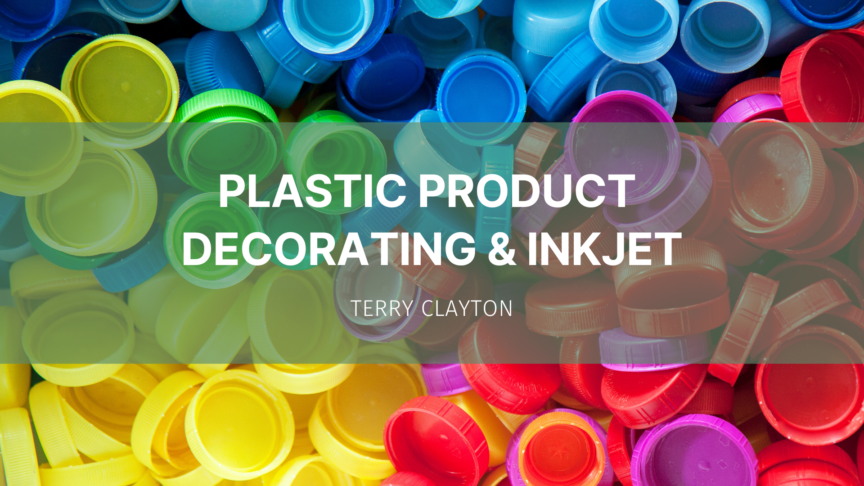The technical conference of the Plastics Decorating Association and In-Mold Decorating Association met in Milwaukee, Wisconsin the last week of September.
The Plastic Product Decorating Summit is a technical conference where molders, printers, equipment manufacturers, and raw material suppliers meet to discuss industry issues, new technologies, and market trends. Decorating technologies include gravure, flexo, screen, pad printing as well as digital inkjet and toner printing. Although inkjet penetration into direct-to-object is estimated at less than 5%, it was clearly on the minds of industry representatives at the event. Below are some relevant highlights from the floor.
Automotive
Dr. Chris Seubert, the keynote speaker, kicked off the meeting with an overview of the inkjet and valve jet technology Ford Motor Company is evaluating. While painting up to 60 vehicles per hour, it is estimated that only 65% of paint is applied to the vehicle. Ford, along with automotive manufacturers including BMW and Audi are exploring alternative technologies to spray gun and rotary atomizers. Inkjet technology could reduce waste, eliminate masking, and enhance profitability significantly. The major challenges automakers face with inkjet technology today include speed, chemical compatibility, pigment particle size, viscosity, and paint sagging on non-flat surfaces. However, new print heads in development from Xaar, Quantica, and Durr could offer solutions allowing current paints to be adapted to jetting applications.
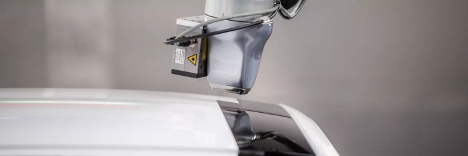
Image source: Dürr
Automation
A panel composed of Muller Technology, AAE, and Diversified Printing discussed challenges and opportunities for automation and robotics in the decorating process. Like wide format printing, there is a need for automation to increase throughput and production efficiency. For direct-to-object as well as in-mold decorating processes robots and cobots offer benefits beyond speed. Quality and consistency are generally higher along with safety and even sustainability when manual processes are automated. Systems which can recapture momentum (energy capture) from movements are now available which reduce energy consumption. Manufacturers are under pressure to move operations to countries with low-cost labor. However, manufacturing further away from relevant markets creates the added costs and environmental impact of increased transportation. Automation can reduce the cost impacts of moving production to countries for low-cost labor and allow for operations to remain closer to key markets. The major challenges herein are related to initial investment and the necessary skill needed for automation programming. Automation beyond material handling includes key advancements in cameras allow vision systems to increase speed of inspection while improving quality.
Surface Science
The adhesion of inks and coatings is not a problem unique to inkjet applications. In fact, with the broad range of substrates the decorating industry utilizes, surface preparation is a well-respected subject. I was pleased to see the level of attention this subject received. Joann Hilman, of Brighton Science and Alex Kiel, of 3DT discussed the importance of surface measurement and treatment. Brighton Science has a handheld contact angle which can be used in production and reports contact angle measurements using pure water in less than 2 seconds. This non-destructive technique eliminates the person-to-person variability when using techniques such as dyne pens. This rapid test can be used to assess surface preparation processes and troubleshooting adhesion issues. In addition to a handheld solution, they can help manufactures integrate networked test fixtures into production lines. Kiel discussed the pros and cons of corona and plasma treatment systems and how to choose. The behavior of polymers and environmental effects on treatment were discussed. 3DT has customizable systems to improve adhesion of inks, adhesives, and coatings on 3D parts.
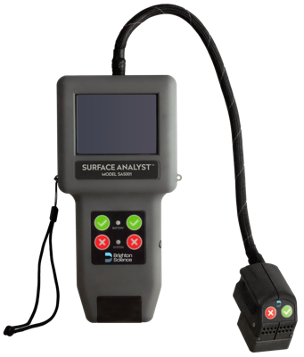
Sustainability
In mold technologies typically utilize labels which are composed of the same resin type as the part or package they are applied to. In mold decoration are therefore easier to recycle than package decoration and in-mold labels which utilize pressure sensitive labels.
Innovative materials and processes which further recycling, reduce plastic packaging, and carbon neutrality gained the attention of attendees. Molded fiber packaging (MFP) is an older technology (egg cartons) that is getting the attention of brands as it reduces the amount of plastic used. MFP can be produced with wet or dry fiber which is then thermoformed. MCC Verstraete, an in-mold label supplier, has developed paper labels which bond perfectly to dry to wet fiber molded packaging which is both recyclable and compostable.
It is also possible to eliminate the label altogether. Wet offset inks as well and direct-to-object inkjet printing make this possible. You can learn more about direct-to-object inkjet printing in the Innovations in Industrial Inkjet webinar here . An important step for printing without labels will be preparation of the substrate with the use of surface treatment, as explained earlier, and proper primers. A popular surface treatment for glass is the Pyrosil process. Amorphous silica is applied to surface by flame pyrolytic deposition. This increases dyne level and adds microscopic roughness. Both strategies will help companies who are looking to become carbon neutral. How important is sustainability to packaging and label suppliers? Danone, one of the world’s largest food and beverage companies has set a goal of becoming a net zero carbon emission company by 2050. To achieve their goal, Danone, and other major brands with similar initiatives, will be looking at raw material suppliers, printers, and logistic companies to support them in this effort. Inkcups is a good example of a direct-to-object printer supplier who has done a nice job pulling all the pieces together for label free printing. They will supply, pretreatment systems, printers, as well as primers and inkjet inks.
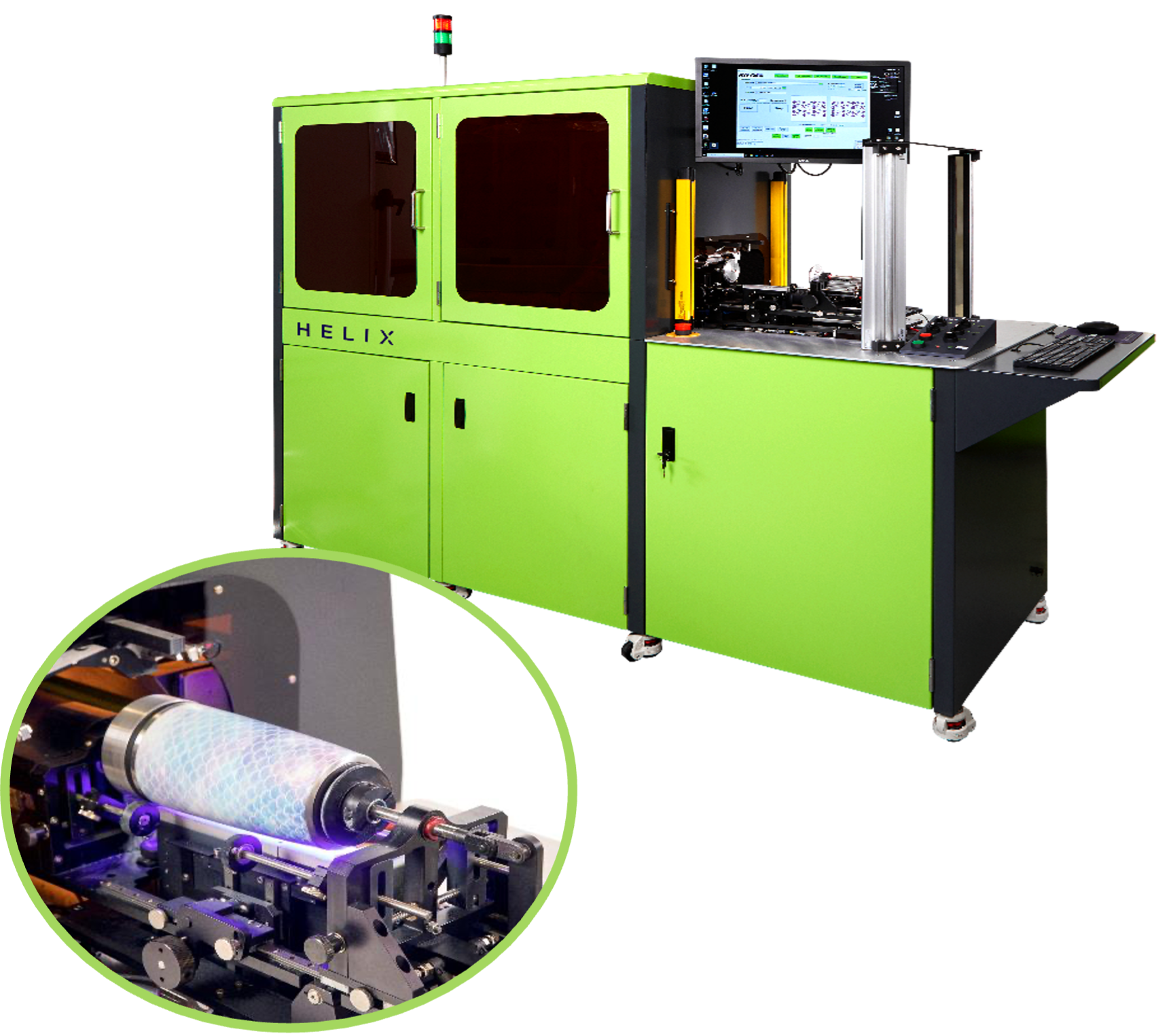
Image Source: Inkcups
Pad Printing
Pad printing is also an alternative to applying labels on products and packaging. Silicone pads invented the 1960’s, are still widely used today. Pad printing is capable of printing with line definition down to 25 microns but still requires the use of imaged plates or clichés and solvent based inks. Chris Demell of IDS, a division of ITW, reviewed benefits of pad printing and strategies to determine system design for unique applications including the selection of solvent or UV curable inks. Pad printing is widely used for direct-to-object printing as the soft silicone pad allows for printing on a wide variety of 3D objects.
Digital Heat Transfer
Tom Grey, of Xeikon, provided an overview of their toner label presses for high quality digital heat transfers. Although the speed of toner is slower than their inkjet offering, there are some interesting benefits. Notably are industry preferences of toner for food packaging applications due to migrations and odor concerns with UV inkjet. Grey also described a new Xeikon patented technology involving production method of standup pouches using toner printed PET/EVA film laminate technology appropriate for food packaging.
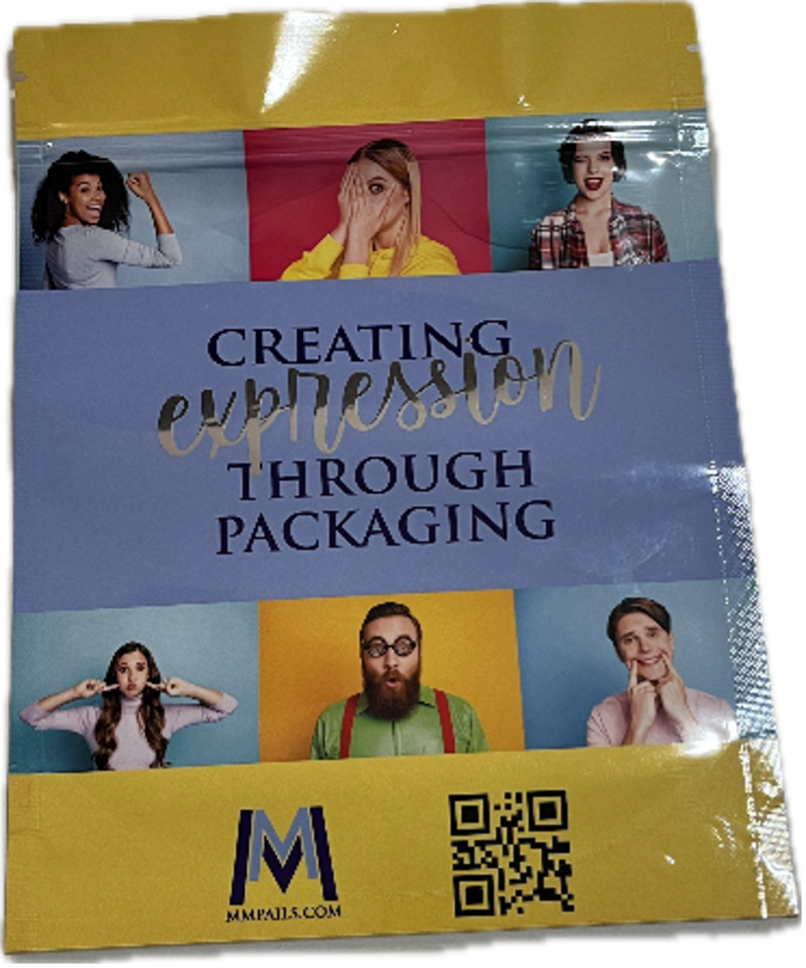
CX500 Image Source: Xeikon
UV Curing and Chemistry
In addition to my presentation on Process Advantages and Limitations of Inkjet was a panel discussion on UV chemistry and its role in plastics decorating. A question-and-answer session with attendees was led by Marabu Technical Manager Marsha McDowell and Chris Davis of IST America. McDowell described the fundamentals of UV curable formulation along with strengths and weaknesses of UV curing and acrylate chemistry. The benefits of UV in decorating include enhanced gloss, protective properties, enhanced color and immediate cure. Marabu produces a variety of inks related to decorating including screen, pad printing, and inkjet inks. Davis provided an overview of electromagnetic spectrum and described similarities and differences in traditional arc lamp curing versus UV LED systems.
Sussex IM
The conference wrapped up on Friday with a plant tour of Sussex Injection. It was an unrestricted access tour of operations including a look at their new clean room facility, engineering, tooling, and quality control. Production leads described, in detail, single and double shot injection molding application which were underway. Engineering provided process overviews and the quality department walked us through methodologies for automated and custom manual QC procedures make sure all equipment was producing parts in specification 24/7.
The plastics decorating and in-mold decorating industry has traditionally been dominated by pad printing and screen printed thermoplastics for in-mold decorating. And while the majority of plastics decorating are still using analog methods, it is clear that digital is on the rise. According to Future Market Insights, direct-to-object inkjet printing is expected to grow at a CAGR of 7.2% between now and 2030.

